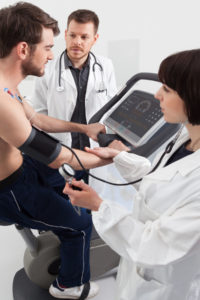
The researchers evaluated data from nearly 2,000 people with a mean age of 58 years, 53.2% of whom were women to evaluate the question of how blood pressure levels during and after submaximal exercise may relate to later cardiovascular disease. They found that higher systolic blood pressure (SBP) and higher diastolic blood pressure (DBP) during submaximal exercise were both associated with a greater likelihood of developing cardiovascular disease and hypertension.
Specifically, the researchers found that high exercise blood pressures were associated with higher mass in the left ventricle and greater thickness of the carotid intima-media. Slower blood pressure recovery when exercise was stopped was also associated with these indicators of cardiovascular disease.
The authors of the study urge people to be aware of their blood pressure. In addition, in light of these recent findings, they recommend that people ask their primary care, and or hospital physicians about their blood pressure changes during and after exercise to help reduce their risk for health problems later in life.
Reference
Lee, J, Vasan, RS, & Xanthakis, V. (2020). Association of blood pressure responses to submaximal exercise in midlife with the incidence of cardiovascular outcomes and all-cause mortality: The Framingham Heart Study. Journal of the American Heart Association. DOI: 10.1161/JAHA.119.015554
